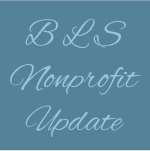 In August 2016, the Financial Accounting Standards Board (FASB) issued Accounting Standards Update 2016-14 (ASU 2016-14) to make improvements to the communication of information on not-for-profit financial statements. ASU 2016-14 is effective for not-for-profit organizations with annual reporting periods beginning after December 15, 2017 (calendar year 2018 or fiscal year 2019). ASU 2016-14 focuses on the five main areas listed below, but this blog will provide information and implementation examples solely related to investment returns.
In August 2016, the Financial Accounting Standards Board (FASB) issued Accounting Standards Update 2016-14 (ASU 2016-14) to make improvements to the communication of information on not-for-profit financial statements. ASU 2016-14 is effective for not-for-profit organizations with annual reporting periods beginning after December 15, 2017 (calendar year 2018 or fiscal year 2019). ASU 2016-14 focuses on the five main areas listed below, but this blog will provide information and implementation examples solely related to investment returns.
Five main areas of focus in ASU 2016-14:
- Net asset classes
- Investment return
- Functional expense reporting
- Liquidity and availability of resources
- Presentation of operating cash flows
Prior to ASU 2016-14, there was no standardization of how investment returns were reported in financial statements. ASU 2016-14 requires that investment returns be presented net of investment expenses on the face of the statement of activities. Organizations have the option to present the amounts of net investment returns from portfolios that are managed differently or derived from different sources as separate line items in the statement of activities. For example, net investment returns generated from operating cash can be shown separately from net investment returns generated from an endowment.
Investment expenses consist of both external and direct internal expenses. External expenses include fees paid to an outside investment manager, as well as those fees imbedded in the investment return vehicle itself. FASB defines direct internal investment expenses as those expenses involved in the direct conduct or direct supervision of the strategic and tactical activities involved in generating investment return. Examples of direct internal investment expenses could include the salaries, benefits, and other costs associated with the employee(s) responsible for the development and execution of the investment strategy, as well as allocable costs associated with internal investment management and supervising, selecting, and monitoring of external investment management firms.
ASU 2016-14 no longer requires nonprofits to disclose investment expense amounts (except for any internal salaries and benefits that have been presented net against investment return) or the components of investment return in the notes to the financial statements.
FASB hopes that the above changes will provide a more comparable measure of investment returns across all nonprofit entities.
Please contact your CPA or BLS professional with any questions or to request additional guidance regarding the presentation of investment returns and the implementation of ASU 2016-14.
